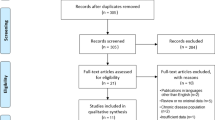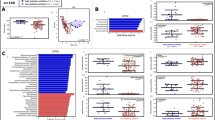Abstract
Introduction
Several gases are produced through enteric fermentation in the intestinal tract. Carbon dioxide, hydrogen, hydrogen sulfide, and methane are thought to be the most common of these. Recent evidence suggests that methane may not be inert. In this review article, we summarize the findings with methane.
Methods
This is a review article discussing the various component gases in the gastrointestinal tract and their relevance to health and disease. Specific attention was paid to understanding methane.
Results
The majority of these gases are eliminated via flatus or absorbed into systemic circulation and expelled from the lungs. Excessive gas evacuation or retention causes gastrointestinal functional symptoms such as belching, flatulence, bloating, and pain. Between 30 and 62% of healthy subjects produce methane. Methane is produced exclusively through anaerobic fermentation of both endogenous and exogenous carbohydrates by enteric microflora in humans. Methane is not utilized by humans, and analysis of respiratory methane can serve as an indirect measure of methane production. Recent literature suggests that gases such as hydrogen sulfide and methane may have active effects on gut function. In the case of hydrogen sulfide, evidence demonstrates that this gaseous product may be produced by human eukaryotic cells. However, in the case of methane, there is increasing evidence that this gas has both physical and biological effects on gut function. It is now often associated with functional constipation and may have an active role here.
Conclusion
This review of the literature discusses the significance of enteric flora, the biogenesis of methane, and its clinical associations. Furthermore, we examine the evidence for an active role of methane in gastrointestinal motility and the potential applications to future therapeutics.

Similar content being viewed by others
References
Savage D. Microbial ecology of the gastrointestinal tract. Annu Rev Microbiol. 1977;31:107–133. doi:10.1146/annurev.mi.31.100177.000543.
Simon GL, Gorbach SL. Intestinal flora in health and disease. Gastroenterology. 1984;86:174–193.
Cummings JH. Fermentation in the human large intestine: evidence and implications for health. Lancet. 1983;1:1206–1209. doi:10.1016/S0140-6736(83)92478-9.
Strocchi A, Levitt MD. Maintaining intestinal H2 balance: credit the colonic bacteria. Gastroenterology. 1992;102:1424–1426.
Wang R. Two’s company, three’s a crowd: can H2S be the third endogenous transmitter? FASEB. 2002;16:1792–1798. doi:10.1096/fj.02-0211hyp.
Ignarro LJ, Buga GM, Wood KS, et al. Endothelium-derived relaxing factor and released from artery and vein is nitric oxide. Proc Natl Acad Sci USA. 1987;84:9265–9269. doi:10.1073/pnas.84.24.9265.
Murray JA, Ledlow A, Launspach J, et al. The effects of recombinant human hemoglobin on esophageal motor functions in humans. Gastroenterology. 1995;109:1241–1248. doi:10.1016/0016-5085(95)90584-7.
Mearin F, Mourelle M, Guarner F, et al. Patients with achalasia lack nitric oxide synthase in the gastro-oesophageal junction. Eur J Clin Invest. 1993;23:724–728. doi:10.1111/j.1365-2362.1993.tb01292.x.
Pimentel M, Mayer AG, Park S, et al. Methane production during lactulose breath test is associated with gastrointestinal disease presentation. Dig Dis Sci. 2003;48:86–92. doi:10.1023/A:1021738515885.
Chatterjee S, Park S, Low K, Kong Y, Pimentel M. The degree of breath methane production in IBS correlates with the severity of constipation. Am J Gastroenterol. 2007;102:837–841. doi:10.1111/j.1572-0241.2007.01072.x.
Weaver GA, Krause JA, Miller TL, et al. Incidence of methanogenic bacteria in a sigmoidoscopy population: an association of methanogenic bacteria and diverticulosis. Gut. 1986;27:698–704. doi:10.1136/gut.27.6.698.
Haines A, Metz G, Dilawari J, et al. Breath-methane in patients with cancer of the large bowel. Lancet. 1977;2:481–483. doi:10.1016/S0140-6736(77)91605-1.
Levitt MD, Bond JH. Volume, composition, and source of intestinal gas. Gastroenterology. 1970;59:921–929.
Kirk E. The quantity and composition of human colonic flatus. Gastroenterology. 1949;12:782–794.
Levitt MD, Ingelfinger FJ. Hydrogen and methane production in man. Ann N Y Acad Sci. 1968;150:75–81. doi:10.1111/j.1749-6632.1968.tb19033.x.
Levitt MD. Production and excretion of hydrogen gas in man. N Engl J Med. 1969;281:122–127.
Bond JH, Engel RR, Levitt MD. Factors influencing pulmonary methane excretion in man. An indirect method of studying the in situ metabolism of the methane-producing colonic bacteria. J Exp Med. 1971;133:572–588. doi:10.1084/jem.133.3.572.
Christl SU, Murgatroyd PR, Gibson GR, et al. Production, metabolism, and excretion of hydrogen in the large intestine. Gastroenterology. 1992;102:1269–1277.
Peled Y, Gilat T, Liberman E, et al. The development of methane production in childhood and adolescence. J Pediatr Gastroenterol Nutr. 1985;4:575–579. doi:10.1097/00005176-198508000-00013.
Flatz G, Czeizel A, Metneki J, et al. Pulmonary hydrogen and methane excretion following ingestion of an unabsorbable carbohydrate: a study of twins. J Pediatr Gastroenterol Nutr. 1985;4:936–941. doi:10.1097/00005176-198512000-00014.
Florin TH, Zhu G, Kirk KM, et al. Shared and unique environmental factors determine the ecology of methanogens in humans and rats. Am J Gastroenterol. 2000;95:2872–2879. doi:10.1111/j.1572-0241.2000.02319.x.
Flourie B, Etanchaud F, Florent C, et al. Comparative study of hydrogen and methane production in the human colon using caecal and faecal homogenates. Gut. 1990;31:684–685. doi:10.1136/gut.31.6.684.
Pochart P, Lemann F, Flourie B, et al. Pyxigraphic sampling to enumerate methanogens and anaerobes in the right colon of healthy humans. Gastroenterology. 1993;105:1281–1285.
Cloarec D, Bornet F, Gouilloud S, et al. Breath hydrogen response to lactulose in healthy subjects: relationship to methane producing status. Gut. 1990;31:300–304. doi:10.1136/gut.31.3.300.
McKay LF, Eastwood MA, Brydon WG. Methane excretion in man—a study of breath, flatus, and faeces. Gut. 1985;26:69–74. doi:10.1136/gut.26.1.69.
Jones WJ, Nagle DP, Whitman WB. Methanogens and the diversity of archaebacteria. Microbiol Rev. 1987;51:135–177.
Hungate RE. Symposium: selected topics in microbial ecology. I. Microbial ecology of the rumen. Bacteriol Rev. 1960;24:353–356.
Johnson KA, Johnson DE. Methane emissions from cattle. J Anim Sci. 1995;73:2483–2492.
Miller TL, Wolin MJ. Enumeration of Methanobrevibacter smithii in human feces. Arch Microbiol. 1982;131:14–18. doi:10.1007/BF00451492.
McKay LF, Holbrook WP, Eastwood MA. Methane and hydrogen production by human intestinal anaerobic bacteria. Acta Pathol Microbiol Immunol Scand. 1982;90:257–260.
Blaut M. Metabolism of methanogens. Antonie Van Leeuwenhoek. 1994;66:187–208. doi:10.1007/BF00871639.
Gibson GR, Cummings JH, Macfarlane GT, et al. Alternative pathways for hydrogen disposal during fermentation in the human colon. Gut. 1990;31:679–683. doi:10.1136/gut.31.6.679.
Thauer RK, Jungermann K, Decker K. Energy conservation in chemotrophic anaerobic bacteria. Bacteriol Rev. 1977;41:100–180.
Gibson GR, Macfarlane GT, Cummings JH. Sulfate reducing bacteria and hydrogen metabolism in the human large intestine. Gut. 1993;34:437–439. doi:10.1136/gut.34.4.437.
Christl SU, Gibson GR, Cummings JH. Role of dietary sulphate in the regulation of methanogenesis in the human large intestine. Gut. 1992;33:1234–1238. doi:10.1136/gut.33.9.1234.
Pochart P, Dore J, Lemann F, et al. Interrelations between populations of methanogenic archaea and sulfate-reducing bacteria in the human colon. FEMS Microbiol Lett. 1992;98:225–228.
Gibson GR, Cummings JH, Marfarlane GT. Competition for hydrogen between sulphate-reducing bacteria and methanogenic bacteria from the human large intestine. J Appl Bacteriol. 1988;65:241–247.
Karlin DA, Jones RD, Stroehlein JR, et al. Breath methane excretion in patients with unresected colorectal cancer. J Natl Cancer Inst. 1982;69:573–576.
Kashtan H, Rabau M, Peled Y, et al. Methane production in patients with colorectal carcinoma. Isr J Med Sci. 1989;25:614–616.
Kassinen A, Krogius-Kurikka L, Makivuokko H, et al. The fecal microbiota of irritable bowel syndrome patients differs significantly from that of healthy subjects. Gastroenterology. 2007;133:24–33. doi:10.1053/j.gastro.2007.04.005.
Halvorson HA, Schlett CD, Riddle MS. Postinfectious irritable bowel syndrome—a meta-analysis. Am J Gastroenterol. 2006;101:1894–1899. doi:10.1111/j.1572-0241.2006.00654.x.
Pimentel M, Chow EJ, Lin HC. Normalization of lactulose breath testing correlates with symptom improvement in irritable bowel syndrome. A double-blind, randomized, placebo-controlled study. Am J Gastroenterol. 2003;98:412–419.
William HL. Lactulose breath testing, bacterial overgrowth, and IBS: just a lot of hot air? Gastroenterology. 2003;125:1898–1900.
Fiedorek SC, Pumphrey CL, Casteel HB. Breath methane production in children with constipation and encopresis. J Pediatr Gastroenterol Nutr. 1990;10:473–477. doi:10.1097/00005176-199005000-00010.
Peled Y, Weinberg D, Hallak A, et al. Factors affecting methane production in Humans. Dig Dis Sci. 1987;32:267–71. doi:10.1007/BF01297052.
Soares AC, Lederman HM, Fagundes-Neto U, et al. Breath methane associated with slow colonic transit time in children with chronic constipation. J Clin Gastroenterol. 2005;39:512–515. doi:10.1097/01.mcg.0000165665.94777.bd.
Stephen AM, Wiggins HS, Englyst HN, et al. The effect of age, sex and level of dietary fibre from wheat on large-bowel function in thirty healthy subjects. Br J Nutr. 1986;56:349–361. doi:10.1079/BJN19860116.
Drossman DA, Morris CB, Hu Y, et al. A prospective assessment of bowel habit in irritable bowel syndrome in women: defining an alternator. Gastroenterology. 2005;128:580–589. doi:10.1053/j.gastro.2004.12.006.
Pimentel M, Chatterjee S, Chow EJ, et al. Neomycin improves constipation-predominant irritable bowel syndrome in a fashion that Is dependent on the presence of methane gas: subanalysis of a double-blind randomized controlled study. Dig Dis Sci. 2006;51:1297–1301. doi:10.1007/s10620-006-9104-6.
Pitcher MC, Cummings JH. Hydrogen sulphide: a bacterial toxin in ulcerative colitis? Gut. 1996;39:1–4. doi:10.1136/gut.39.1.1.
Pimentel M, Lin HC, Enayati P, et al. Methane, a gas produced by enteric bacteria, slows intestinal transit and augments small intestinal contractile activity. Am J Physiol Gastrointest Liver Physiol. 2006;290:G1089–G1095. doi:10.1152/ajpgi.00574.2004.
Bulbring E, Lin RCY. The effect of intraluminal application of 5-hydroxytryptamine and 5-hydroxytryptophan on peristalsis, the local production of 5-hydroxytryptamine and its release in relation to intraluminal pressure and propulsive activity. J Physiol. 1958;140:381–407.
Bertaccini G. Tissue 5-hydroxytryptamine and urinary 5-hydroxyindoleacetic acid after partial or total removal of the gastrointestinal tract in the rat. J Physiol. 1960;153:239–249.
Bearcroft CP, Perret D, Farthing MJG. Postprandial 5-hydroxytryptaminein diarrhea predominant irritable bowel syndrome: a pilot study. Gut. 1998;42:42–46.
Pimentel M, Kong Y, Park S. IBS subjects with methane on lactulose breath test have lower postprandial serotonin levels than subjects with hydrogen. Dig Dis Sci. 2004;49:84–87. doi:10.1023/B:DDAS.0000011607.24171.c0.
Hede AR, Andersson L, Post C. Effect of a homologous series of halogenated methanes on pulmonary uptake of 5-hydroxytryptamine in isolated perfused rat lung. Acta Pharmacol Toxicol (Copenh). 1985;57:291–296.
Wolin MJ. Fermentation in the rumen and human large intestine. Science. 1981;213:1463–1468. doi:10.1126/science.7280665.
Miller TL, Wolin MJ. Inhibition of growth of methane-producing bacteria of the ruminant forestomach by hydroxymethylglutaryl SCoA reductase inhibitors. J Dairy Sci. 2001;84:1445–1448.
Florin THJ, Woods HJ. Inhibition of methanogenesis by human bile. Gut. 1995;37:418–421. doi:10.1136/gut.37.3.418.
Author information
Authors and Affiliations
Corresponding author
Rights and permissions
About this article
Cite this article
Sahakian, A.B., Jee, SR. & Pimentel, M. Methane and the Gastrointestinal Tract. Dig Dis Sci 55, 2135–2143 (2010). https://doi.org/10.1007/s10620-009-1012-0
Received:
Accepted:
Published:
Issue Date:
DOI: https://doi.org/10.1007/s10620-009-1012-0




